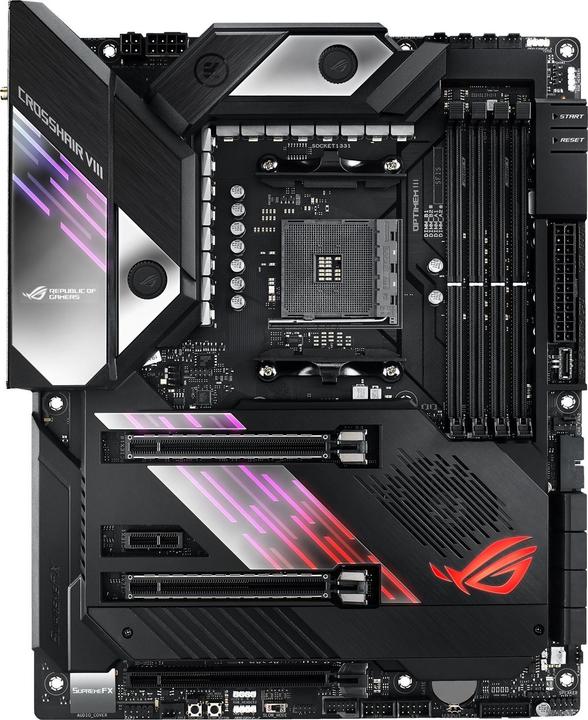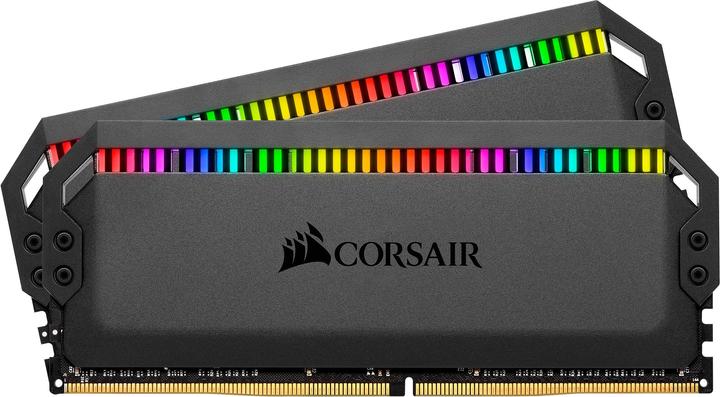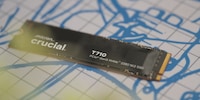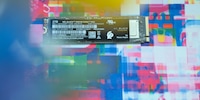
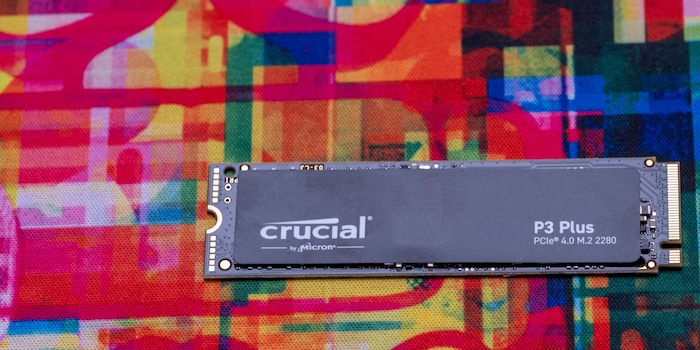
Why I can’t recommend this SSD
The P3 Plus from Crucial is a relatively inexpensive SSD with the PCIe 4.0 standard. And it’s the best example of why price isn’t everything.
All SSDs are fast – it doesn’t really matter which model you buy. Right? Well, I certainly used to think so. Until I tested the Crucial P3 Plus. The SSD with PCIe 4.0 standard lags very far behind the competition in certain respects. I can’t recommend it.
Features: no DRAM
Crucial relies on the Phison E21T controller for the P3 Plus. The «T» in the name indicates that there’s no dedicated DRAM cache. «Dynamic Random Access Memory» stores the location of the data on the SSD. Put simply, SSDs without a DRAM cache are slower because they store said data allocation in the memory cells themselves. This also has an impact on the lifespan of the SSD; the memory cells wear down more quickly. If you want to know more about the construction and functionality of an SSD, you can check out the following article (in German).
My one-terabyte (TB) review sample has two NAND memory modules. NAND is a non-volatile storage technology that doesn’t require power to store data. The P3 Plus uses QLC NAND with 176 layers – «Quadruple Level Cell» meaning 4 bits are possible per memory cell. This makes it slower and less durable than the 3-bit TLC NAND often used in high-end SSDs. This, in turn, affects the write limit of the warranty period. For the P3 Plus, it’s 5 years or 220 TB. Doesn’t sound like much, but that’s still around 120 gigabytes (GB) of data that can be written every day. Sure, it’s not recommended for people who write a lot of data, but it should be enough for everyone else.
A quarter of the storage volume – that’s 250 GB in the case of my test sample – can be written with 1 bit in the fast, single-level cell mode (SLC). Once these are used up, the disk switches back to QLC mode. SSDs use a trick here. Namely, if SLC mode is exhausted and no large write operations are pending, they shovel the data into the QLC memory. This should free up a quarter of the available memory for SLC mode. As my test shows, this only works to a limited extent on the Crucial P3 Plus.
The P3 Plus comes in the M.2-2280 form factor with the NVMe interface. It’s available with a storage capacity of 500 GB, 1 TB, 2 TB or 4 TB. It doesn’t have a heatsink. This isn’t a big deal since most modern motherboards already have one pre-installed. Crucial lists a read rate of 5,000 megabytes per second (MB/s) and a write rate of 3,600 MB/s for my 1 TB model. However, the specifications differ depending on the capacity.
Sequential write and read speed in the ATTO Disk Benchmark
Sequentially stored data is saved in contiguous blocks. Thanks to sequential read and write, you can estimate how fast the SSD is when accessing large multimedia files, transcoding videos or watching movies. Manufacturers like to quote sequential speeds, as they offer the highest values.
The ATTO Disk Benchmark uses uncompressed data. It tests read and write performance of various transfer sizes from 512 bytes to 64 megabytes in sequential read and write.
I perform this and all following tests on my test system, which has the following components:
In the following chart, you can see the results in comparison with various already tested SSDs. I added the results of the Crucial P5 to serve as a reference for a PCIe 3.0 SSD. Other than that, all the SSDs are PCIe 4.0. To keep things clear and understandable, I didn’t add each individual result to the graph.
With 4,460 MB/s, the P3 Plus doesn’t reach the specified maximum read speed of 5,000 MB/s. While most SSDs don’t reach their specifications in the benchmark, the difference is rather high here. As a rule, the values are no more than 500 MB/s apart. Neither does it reach the specified write speed of 3,600 MB/s, instead scoring 3,252 MB/s. The SSD only deploys its full read and write speed from a file size of about 64 kilobytes (KB). With that, the P3 Plus lags behind all PCIe 4.0 SSDs tested so far.
Random access and more on sequential speed
The benchmark from Anvil’s Storage Utilities not only gives the read and write speeds, but also information about input and output commands per second (IOPS) along with response times. The higher the IOPS values, the faster the SSD. The shorter the response times, the faster the SSD reacts. While the MB/s and GB/s values are central for sequential read and write, the IOPS values are central for random write.
The benchmark tests the speed with random read and writes of different sizes. Random read and writes refer to data that isn’t stored in contiguous memory cells; they’re randomly distributed on the SSD. This benchmark can be used to estimate how fast SSDs are when booting, loading applications and searching for stored files. Based on the tests, the benchmark assigns a score for reading and another for writing. In the following chart, you can see the result of the P3 Plus compared to other SSDs that have been tested. If you’re interested in the detailed results of the P3 Plus, you can download screenshots of the benchmark results here.
The P3 Plus is in last place compared to all PCIe 4.0 SSDs tested so far. If I add up the read and write scores, the SSD is 21% behind the second weakest model. Credit where credit is due, the P3 Plus has a 23 per cent advantage over the Crucial P5, which still relies on the PCIe 3.0 standard.
PCMark 8 and temperatures
The storage benchmark from PCMark 8 is based on a real scenario; it simulates the work steps of various applications from Adobe Creative Suite, Microsoft Office and games. It records the memory activity and generates a benchmark score from it.
In the following chart, you can see the result of the P3 Plus compared to other SSDs that have been tested. If you’re interested in the detailed results of the P3 Plus, you can download screenshots of the benchmark results here.
In PCMark 8, the P3 Plus is closer to the other SSDs. The difference between it and the best result is only slightly over one per cent. PCMark 8 shows that the differences in speed are less significant in everyday use than a synthetic benchmark would suggest. This even applies to the Crucial P5, the only SSD in the comparison that still relies on the PCIe 3.0 standard. In fact, it even performs better than the P3 Plus, though the difference is less than one per cent.
The PCMark 8 test takes about an hour, during which the SSD is in constant use. For this reason, this benchmark provides the best opportunity to gauge the temperature. To monitor the temperature of the SSDs, I use CrystalDisk Info. The tool also gives me information about the health of the drives, the interface and the transfer mode. If you’re interested in the influence of temperature on the speed of SSDs, you can read more about it in the following article.
The P3 Plus is 40 degrees Celsius when idling. During the benchmark, the temperature increases to a maximum of 51 degrees Celsius. That’s very low; it’s big sister, the P5 Plus, reached 68 degrees Celsius.
Loading times in games
In addition to the benchmarks, I measure the loading times for «Final Fantasy XV», «Rise of the Tomb Raider» and «Resident Evil 2 Remake». I did this by recording the screen while the game loaded and then cut the videos to the relevant frame in Premiere Pro. That’s why one second lasts 25 frames in the following visual. The lower the loading time, the better.
The P3 Plus is clearly behind the other SSDs when it comes to all games. However, this is probably only noticeable in games with long loading times, like «Final Fantasy XV». In the other games, the difference is only about one second. Again, what never ceases to amaze me: the sole PCIe 3.0 SSD can keep up with the faster, newer standard SSDs.
When does the P3 Plus start throttling?
Last but not least, I copy two uncompressed movies with a total size of 69 GB from the system drive to the P5 Plus and measure the time needed for the data transfer. This test allows me to find out whether the SSD throttles down the transfer speed after a certain amount of data.
Here, too, the P3 Plus falls short. When the SSD is empty, the transfer speed is 1.5 GB/s on average, and it doesn’t throttle at any point. This is a decent value.
However, my further tests reveal a big problem with the P3 Plus. I delete all data from the SSD and repeat the test with twice the amount of data, i.e. 138 GB, by creating copies of the movies on the system drive. I repeat the latter step until the P3 Plus starts throttling. Shortly after the start of the third round – with around 250 GB of total data written so far – the SSD throttles to an average of 70 MB/s. That’s slower than an HDD. And this despite the fact that I had deleted the data shortly before. The 250 GB memory in SLC mode appears to be full, even after the data has been deleted.
Instead of just deleting the data, I decide to format the SSD and let it rest for half an hour in the hope that SLC mode will be go back to its full performance afterwards. I start off with a bulky 276 GB of data – enough to challenge the 250 GB SLC mode. It looks good at the beginning. But after a few GB transferred at 1.5 GB/s, the SSD throttles back down to 70 MB/s. After a few seconds, the SLC mode appears to recover, and the speed increases. This process then keeps repeating itself. The transfer takes what feels like an eternity.
I format the SSD again and let it rest overnight with the PC on. The same thing happens the next day. The controller of the P3 Plus doesn’t seem to be able to free up the SLC memory. As soon as 250 GB are written to the SSD, the disk becomes unusable. It no longer reaches the specified speed. This is an absolute no-go for me.
Verdict: an SSD I can’t recommend
The Crucial P3 Plus ranks at the bottom of PCIe 4.0 SSDs in all synthetic benchmarks. It can’t keep up in real-world tests either. What’s more, once 250 GB of memory is occupied, it throttles to seriously substandard transfer speeds. Based on this glaring weakness alone, I can’t recommend the Crucial P3 Plus.
Besides, the 1 TB version I tested isn’t much cheaper than its big sister, the P5 Plus – 90 francs / 85 euros vs. 110 francs / 108 euros (as of 12.12.2022). You’re better off investing your money in another SSD. The other SSDs mentioned in this review are available for a similar price as the P5 Plus.
From big data to big brother, Cyborgs to Sci-Fi. All aspects of technology and society fascinate me.

